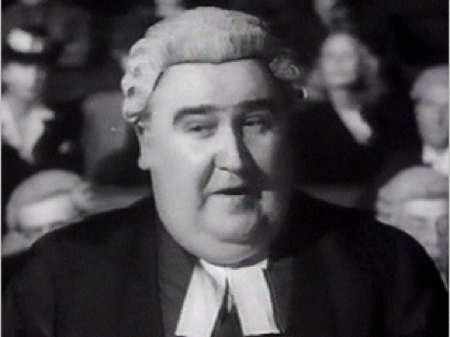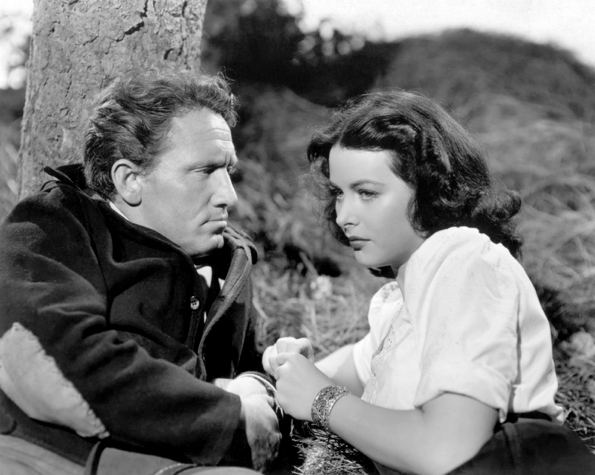
Poirot Score: 58
The Hollow
☆☆
Reasons for the Poirot Score
This is barely a whodunnit at all despite the presence of Poirot. There are no substantial clues. Christie seems to have lost interest in the novel as a murder mystery and to have become more interested in the differing priorities and passions of the characters. She explores with insight and humour how one character cannot but put her art above her relationships, and how, for another, his work as a medical scientist is more important to him than his family or his mistress. Another character uses her vague and elliptical speech like a stalking horse and under the presentation of that she hits the mark. Read this as a murder mystery and it will disappoint. As a novel of contrasting priorities in life it is both satisfying and entertaining.
Click here for full review (spoilers ahead)
Trivia
Dedication
For Larry and Danae
With apologies for using their swimming pool as the scene of a murder
Danae is Danae Sullivan, and Larry her husband: Francis (‘Larry’) Sullivan. Larry was both a stage and film actor who played the part of Hercule Poirot in Christie’s play Black Coffee in 1930. Christie wrote: “I like Francis Sullivan better than Charles Laughton as Poirot”. Sullivan acted in several Christie plays including the part of Canon Pennefather in Murder on the Nile – a play based on the novel Death on the Nile. Canon Pennefather (not to be confused with Canon Pennyfather in At Bertram’s Hotel) is not a character in the novel. For the stage play Christie reduced the number of characters and got rid of Poirot. Canon Pennefather takes on Poirot’s role as well as that of other characters in the novel. Sullivan later received a Tony Award, in 1955, for his part as the barrister, Sir Wilfred Robarts, in Witness for the Prosecution (Christie’s best play) on Broadway.

Charles Laughton had been the first actor to play Poirot on stage: in the play Alibi based on the novel The Murder of Roger Ackroyd in 1928. Charles Laughton, who was one of the most famous stage and film actors of the time, played the part of Sir Wilfred Robarts in Billy Wilder’s 1957 film of Witness for the Prosecution. Marlene Dietrich and Tyrone Power played the other two main characters. The 1985 film Jagged Edge starring Glen Close and Jeff Bridges shares many plot features with Witness for the Prosecution.
Francis Sullivan was born in London in 1903 and died in New York in 1956. He had been to the same school as Charles Laughton (Stonyhurst in Lancashire). In addition to playing major Shakespearean roles on stage and performing in some of Christie’s plays, he acted in over 30 films. He was Mr Jaggers in the 1946 film of Great Expectations and Mr Bumble in the 1948 film of Oliver Twist.
Hedy Lamarr
‘Miss Veronica Cray, the actress …’ ‘I liked her in Lady Rides on Tiger, but she’s a bit high-brow for my taste. Give me Hedy Lamarr.’
Inspector Grange, chapter 12
Hedy Lamarr has a star on The Hollywood Walk of Fame. She is also included as an inductee in the US National Inventors Hall of Fame. A rare, if not unique, double honour. Hedy Lamarr’s intelligence was as high as Inspector Grange’s brow was low.
In 1942 Lamarr, together with Hollywood composer George Antheil, filed a patent which they hoped would help the Allied war effort. The problem they wanted to tackle was how to prevent the German military from detecting or jamming the signals used for the Allied radio-controlled torpedoes. The method they patented involved the rapid switching of radio frequencies in a seemingly random manner. If both sender and receiver switched frequencies in the same way the signal would be clear but to anyone else the signal would sound like noise. This patent was a significant development in wireless communication and the central idea of frequency hopping is used in modern WiFi, mobile phone and Bluetooth technology. Although this method was not used in the war effort Hedi Lamarr used her celebrity status as one of Hollywood’s beautiful stars to sell War Bonds. Her ‘act’ involved accomplice Eddie Rhodes: she flirted with him but would only kiss him if a suffient number of the audience bought the War Bonds.

Hedwig Eva Maria Kiesler was born in Vienna, probably in 1914. When a teenager she moved to Berlin where she trained in the theatre under Max Reinhardt, and also began working in film. She gained some fame at the age of 18 years after appearing in the film Extase, made in Prague, which showed her face apparently during orgasm. In 1937 she escaped her first husband, an Austrian arms merchant, by fleeing to Paris where she met Louis B. Mayer (co-founder of Metro-Goldwyn-Mayer) who took her to Hollywood, insisted on her changing her name to Hedy Lamarr, and promoted her as the world’s most beautiful woman.
She appeared in 13 films between 1940 and 1945 (and in around 30 films altogether) acting opposite William Powell, Clark Gable, Spencer Tracy and James Stewart amongst others.
She died in Florida in 2000 aged 85 years and is buried in Vienna.
Black marocain
She [Mrs Patterson] said in a brisk voice: ‘I think I should decide on that black marocain at twelve guineas.’
Chapter 16
The word comes from the French, maroquin, meaning from Marocco. The word maroquin in English would normally refer to Maroccon leather – as in the Bob Hope and Bing Crosby song The Road to Morocco with the line: “Like Webster’s Dictionary, we are Morocco bound”. Marocain however came into English in the 1920s to refer to a fabric of ribbed crepe or a dress made from such a fabric.
Ridgeway’s Disease
He doubted if he could even make her understand what Ridgeway’s Disease actually was. (‘Particularly,’ he thought with a grin, ‘as we are not really quite sure ourselves! We don’t really know why the cortex degenerates!’)
John Christow thinking of his wife’s lack of interest in his own medical passion
This is a fictional disease. The name may well have been inspired the The Ridgeway – a middle-distance ramblers’ path through the Chiltern hills starting near Tring and ending hear the Avebury ring in Wiltshire. The path passes close to Wallingford where Christie owned a house.
There are a few clues as to what the disease is. We are told that John Christow was not what would now be called a psychiatrist but that his ‘line’ was: “Nervous affections of the alimentary canal and diseases of the super – super something.” In chapter 7 we are told that the cortex degenerates. Elsewhere we learn that the disease is very rare and that if you get it you are bound to die, though John thought he was close to finding a cure. We also know that Mrs Crabtree suffers from Ridgeway’s disease and that she is intellectually sharp.
The term ‘cortex’ would now normally refer to the cerebral cortex (part of the brain) that would not be of interest to a person interested in the alimentary canal. It seems more likely that in the novel it refers to the renal cortex – the outer part of the kidney. The ‘super something’ probably refers to the suprarenal gland (not superrenal) which was a common name for what is now more commonly called the adrenal gland. It sits immediately above the kidney – adjacent to the renal cortex. The naming of diseases after the people who first described them is of course common. Christie may have had Bright’s disease in mind when she thought of Ridgeway’s disease. Bright’s disease is a now obsolete term, named after Richard Bright, which probably referred to various types of nephritis (diseases of the kidney). In short, Ridgeway’s disease was probably a fictional chronic disease either of the renal cortex or perhaps of the adrenal gland.

